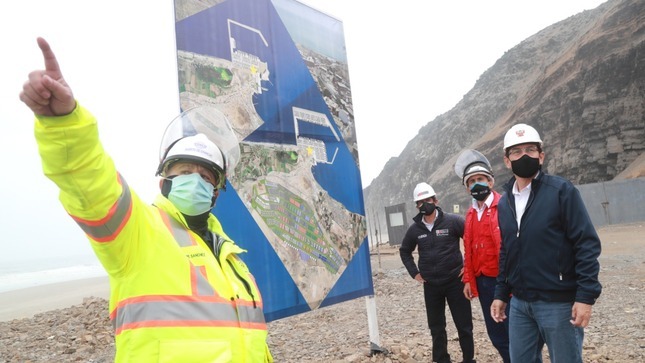
Chinese Coast Guard use water cannons to harass Philippine fishermen.
“The Philippines’ entire naval force owns only two frigates capable of launching missiles. Recognizing this imbalance, the Chinese government has ramped up investment in water cannon technology… Beijing increasingly sees the weapons as vital to bolstering its hold over the disputed waters while also lowering the odds of armed clashes.”
China has managed to avoid open conflict while continually advancing its claims in the South China Sea in part because China employs a variety of non-lethal weapons and tactics. In the following excerpted article published by Hong Kong-based South China Morning Post, the author notes that water cannons have been a critical non-lethal weapon regularly used by the People’s Liberation Army Navy and Chinese Coast Guard against the navies and personnel of other countries in the area, especially in its territorial disputes with the Philippines.[i] The article describes a recent case when a Chinese ship fired a traditional water cannon into a Philippine ship shattering the cockpit windscreen, injuring several personnel, and forcing the Philippine ship to cede. However, according to the article, current water cannon technology is less effective in rough seas. The article claims that a new artificial intelligence (AI) water cannon has been developed by a Chinese firm that could have an outsized influence on China’s ability to maintain its maritime territorial claims. The newly developed AI water cannon is “equipped with motion sensors that collect the swing state of the ship to alter the ballistic parameters allowing it to stay on target under a variety of conditions,” enabling China to continually target adversaries “with an error of only two meters in rough conditions.” The development of a more accurate AI driven water cannon should be considered part of China’s full spectrum warfare. Non-lethal in nature, it would allow China to take offensive action while minimizing the threat of a traditionally lethally armed confrontation. This places the onus on China’s competitors to come up with their own non-lethal weapons and counter-tactics, respond with violent action that could plunge the South China Sea into armed conflict, or ultimately cede the territory.
OE Watch Insight:
The development of an AI-driven water cannon seems to indicate CHN’s commitment to use non-lethal weapons to advance its territorial claims in the South China Sea while avoiding armed conflict.
Sources:
Stephen Chen, “’Subdue the enemy without fighting’: How China’s powerful water cannon will change the game in South China Sea,” SCMP. 13 April 2024. https://www.scmp.com/news/china/science/article/3258772/subdue-enemy-without-fighting-how-chinas-powerful-water-cannon-will-change-game-south-china-sea?utm_medium=email&utm_source=cm&utm_campaign=enlz-today_international&utm_content=20240413&tpcc=enlz-today_international&UUID=200d3857-7b09-402a-bc24-cdd797d79a18&next_article_id=3258875&article_id_list=3258772,3258875,3258822,3258887,3258877,3258884,3258908,3258904&tc=4
The world’s first “smart” water cannon, controlled by artificial intelligence (AI), has been developed by researchers in central China – and it could take the non-lethal weapon to new heights..
The water cannon is also equipped with motion sensors that collect the swing state of the ship to alter the ballistic parameters.
Conditions at sea create complex environmental wind and fluid patterns and mechanical transmission errors, so it can be challenging to lock onto and hit a precise spot on a ship in the distance, such as a smokestack, with a water jet on a swaying coastguard vessel.
…
China has been vigorously developing its maritime forces in recent decades, including electromagnetic catapult aircraft carriers, hypersonic anti-ship missiles, ultra-high-power electronic warfare systems and other cutting-edge equipment.
They are formidable weapons, aimed squarely at the US military, but they are too much for territorial disputes against smaller Southeast Asian nations in the South China Sea.
The vast disparity in military strength renders China’s hi-tech arsenal impractical against these neighbours. For instance, the Philippines’ entire naval force owns only two frigates capable of launching missiles. Recognizing this imbalance, the Chinese government has ramped up investment in water cannon technology, developing a range of increasingly automated and powerful products.
The technology has also been aided from an unlikely quarter – China’s infrastructure projects. With large-scale land reclamation and other infrastructure projects under way, China has some of the world’s most powerful dredging vessels that suck seabed sediment to redistribute it to designated areas. The water pump technology involved in that process is perfectly suited to driving high-performance water cannons…
Zhang Yuqiang, a researcher with the People’s Armed Police Maritime Police Academy Command Department, said that shipboard non-lethal weapons including water cannons “will play an increasingly important role in future maritime conflicts”.
“In recent years, competition and struggles around marine interests and power have become increasingly fierce, and maritime disputes have become a common challenge faced by most maritime countries in the world,”
Because all sides are “fighting for every inch of land and refusing to cede an inch”, the team said, using traditional lethal weapons in small-scale skirmishes could cause them escalate into large-scale armed conflicts. It is a situation that neither China nor other countries around the South China Sea wish to see.Other major maritime countries are now stepping up research and deployment of other types of non-lethal weapons, including blinding lasers and microwaves that can cause skin-burning sensations, they said.
Notes:
[i] South Korea, Taiwan and Japan are also equipped with, and have used, water cannons in naval disputes with competitor nations over maritime territories or fisheries, while the Philippines is lacking in comparison.
Image Information:
Image: Chinese Coast Guard use water cannons to harass Philippine fishermen.
Source: https://www.jamesokeefe.org/2023/12/naval-politics-by-other-means/
Attribution: CCA 4.0 INT



